HomeReviewsShapez 2
Shapez 2 early access review: splendid abstract factory-building with room for a few more surprisesShaping up very nicely
Shaping up very nicely
Image credit:Rock Paper Shotgun/Gamera Games
Image credit:Rock Paper Shotgun/Gamera Games

Over 2000 hours spent in various factory games makes me a bit of a purist, I suppose. In theory, I should then be the ideal reviewer to enjoyShapez 2. But I’m also the ideal reviewer to tear it apart over the most minor hiccups and defects. I’m the Anton Ego of factory games. I don’t like food, I love it. If I don’t love it, I don’t swallow.
To see this content please enable targeting cookies.Manage cookie settings
To see this content please enable targeting cookies.Manage cookie settings
Shapez 2 is all about manipulating shapes. From humble beginnings (circles, squares, and stars) you can chop up, paint, rotate, and piece together all sorts of different Frankensteinian creations. |Image credit:Rock Paper Shotgun/Gamera Games
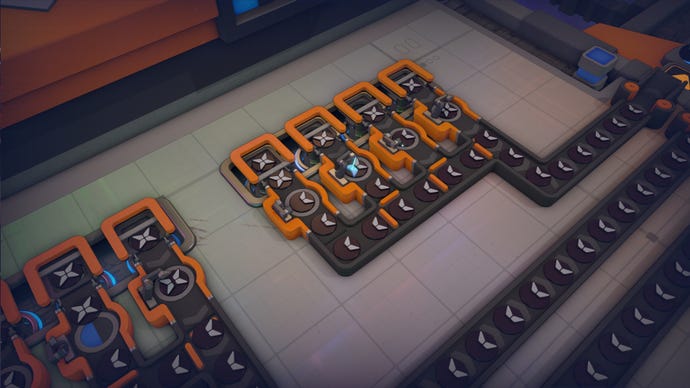
You get the idea. There are two big points of differentiation between Shapez 2 and other factory builders. First is the sandbox nature. There are no enemies to contend with, and buildings don’t cost any resources, so you’re free to build up or tear down belts and buildings as much as you like. The second is the abstraction of the factory products and goals. In Factorio, you’re building circuitboards, gears, plastic bars, all with the end goal of building a rocket to fly away from the hellish planet you’ve crashlanded on. In Shapez 2, you’re building shapes, for no other reason than to feed an ever-hungry vortex who wants to eat shapes.
Whether these points of differentiation are appealing or repulsive is entirely subjective. I’ve no issue with the level of abstraction; in fact, I think it’s very intuitive. In other games, you have to hover over a circuit board to find out how to make it. In Shapez 2, you can clearly see - oh, okay, so that’s a square on the bottom, with opposite quarters of a circle layered atop it. Cool. This sandbox approach means that many of the issues you run into in games like Factorio - running out of resources, defending against enemy attacks, exploring the world for new areas - don’t exist here, and will appeal to some players. But I don’t think the game goes far enough to replace those problem-solving moments with other quandries.
The horrors of belt spaghetti are nothing new to factory game veterans, but things can get pretty wild in Shapez 2 once you unlock the third height level. |Image credit:Rock Paper Shotgun/Gamera Games
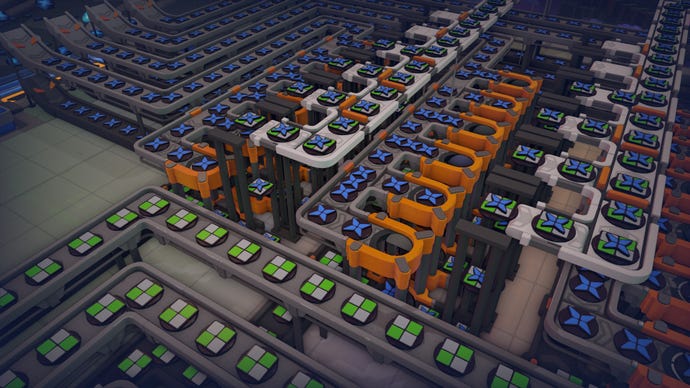
Nevertheless, the game has also grown vastly sinceI played its Next Fest demo, not just in scale but in sophistication. One bugbear I had with the demo was that completing tasks would automatically improve the efficiency and throughput of your belts and factory buildings. Sounds good on paper, but actually it’s pissing annoying for people who cares about carefully engineering a build based on throughput levels, only to have those levels change a few minutes later. With the early access release though, non-Milestone tasks will grant you research points which you can make the choice to spend on improving the efficiency of different buildings - as well as unlocking entirely new buildings and features. It’s a well-implemented system and an excellent change which places control of production rates directly in the player’s hands where it belongs.
One slightly bizarre design choice is that Shapez 2 makes all the buildings and belts free, but simultaneously ascribes a currency to both copy-pasting blueprints and placing down platforms. The procedurally generated worlds of Shapez 2 are vast and - unlike in Shapez 1 - mostly outer space which you can’t build on. To reach far-flung “shape asteroids” to mine more interesting shapes, you need to place down more platforms like the one that houses your central vortex, thus increasing your real-estate for factory-building. The game’s tutorials also encourage you to pre-build platforms for a certain purpose. For example, I spent a bit of time putting together a platform which takes in eight full conveyor belts of one shape, splits them all in half down the middle, and then outputs the two halves in different directions. After that, I could just copy and paste that platform whenever I needed it. Well, as long as I had the Blueprint Points for pasting it, and some spare Platforms to place down.
After you hit a certain critical mass in production, you’ll organically start to think in whole platforms rather than individual buildings and belts, which is where blueprinting becomes very handy. |Image credit:Rock Paper Shotgun/Gamera Games
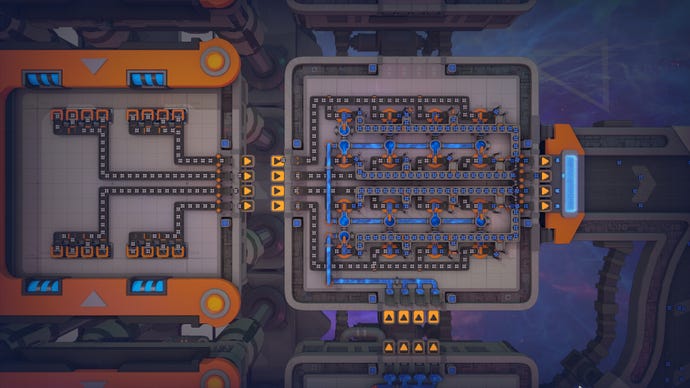
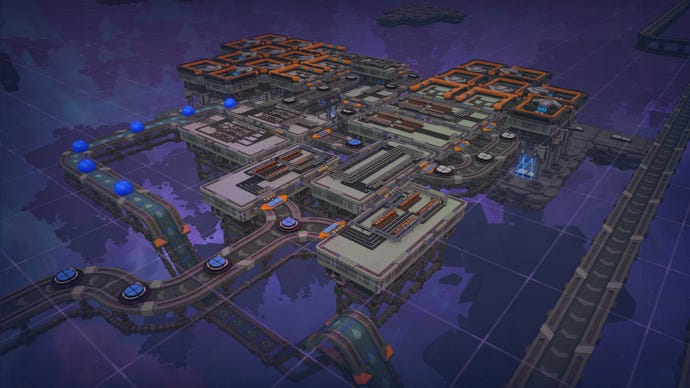
But those kinds of minor quibbles are easily forgotten when you’re halfway through a major shape-building project. In my current save file, I’m working on a factory which outputs over 4,000 of a certain milestone shape every minute. After you complete the final shape in a milestone, you can continue to produce that shape and send it into the vortex to increase your Operator Level, which is mostly just for bragging rights but also gives you some research points, Blueprint Points, and so on for your trouble. It’s a nice touch, at once celebratory and motivational.
I really wish the map was more inspiring than this uniform spritzing of shapes across a flat plane. |Image credit:Rock Paper Shotgun/Gamera Games
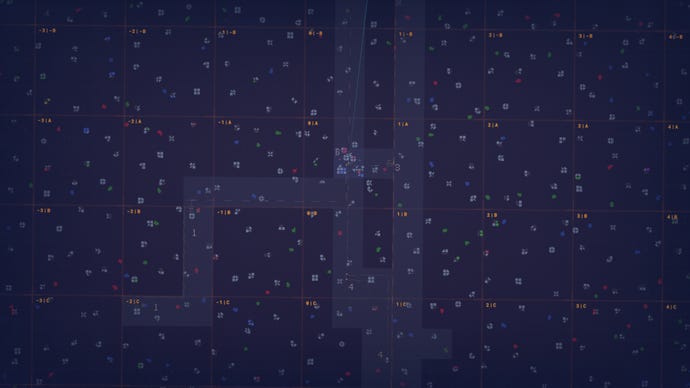
And once you unlock the final milestones, the milestone shapes become randomised, and the game encourages you to start using logic and circuitry to create what’s called a Make Anything Machine (MAM) - the ultimate step in automation. Nowthat’sthe kind of intriguing step up in complexity I want more of throughout the game, and it’s one that I hope to spend plenty more time with.
Shapez 2 is a different flavour of factory game than I’m used to, but executed at times to a near-masterpiece level which makes it very easy to dive in and try something a bit different. Minor balancing issues aside, it all feels incredibly tightly wound, with a huge emphasis placed on comfort, user experience, and satisfaction. I just hope the depth increases over its early access period, with more types of challenges built into later factory processes, and more reasons to explore further afield.